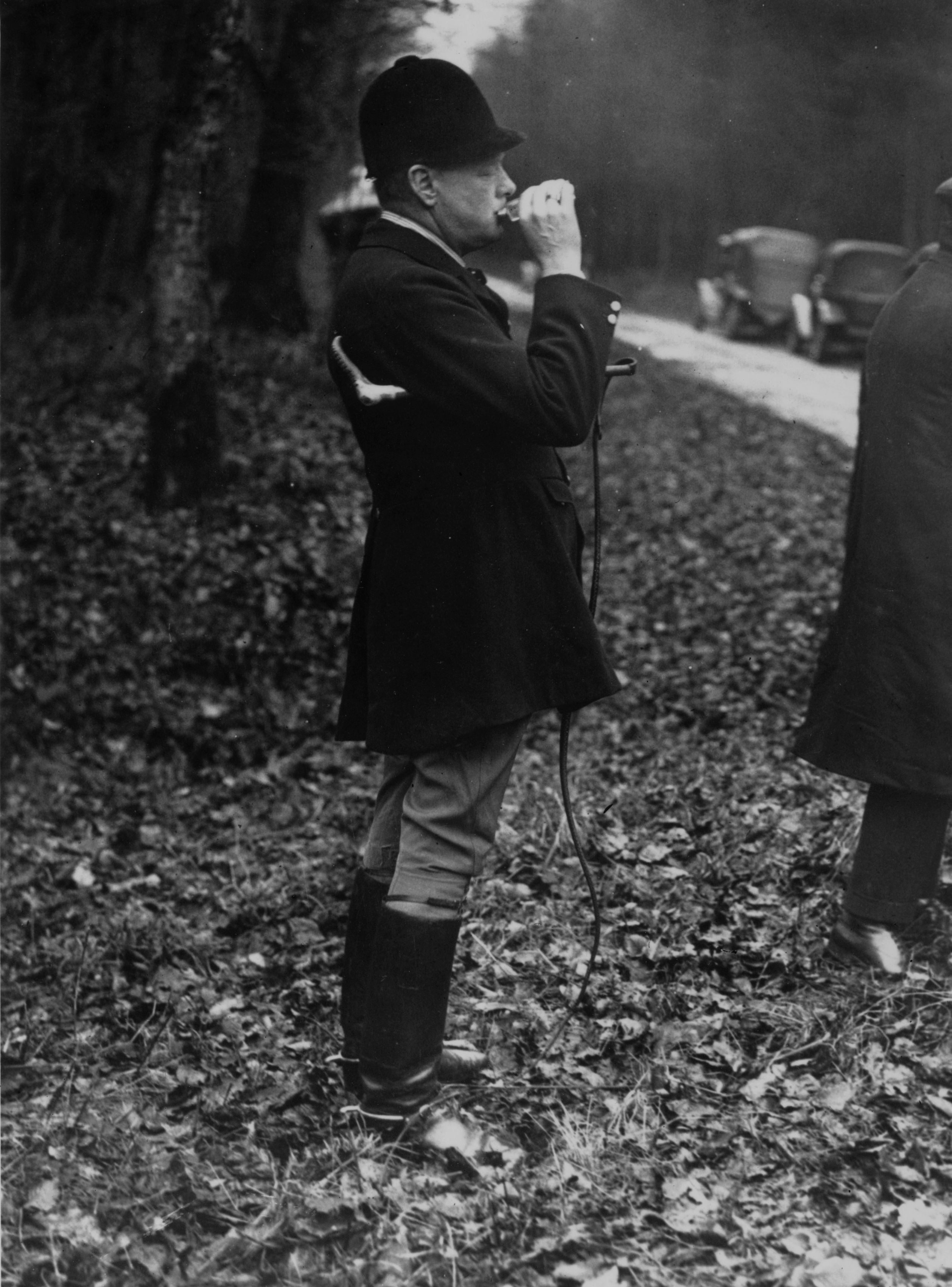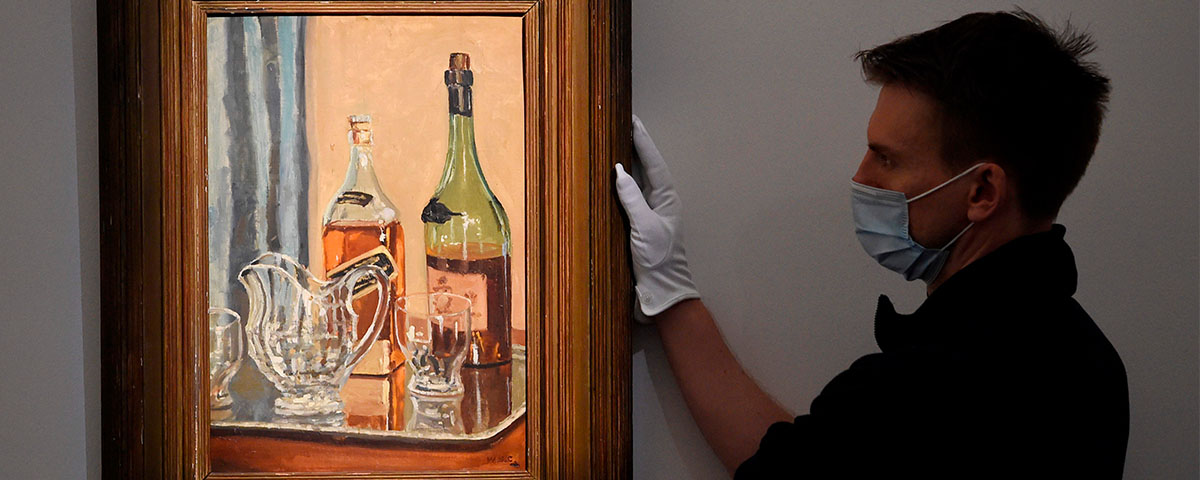Winston and whisky. Perhaps one of the most iconic pairings of the 20th century.
This past Tuesday, one art collector certainly thought so, as one of Winston Churchill’s paintings, ingeniously entitled “Jug with Bottles,” sparked a bidding war and eventually went for nearly $1.3 million—five times the pre-sale estimates.
Painted during Churchill’s “wilderness” years in the 1930s while at his country home of Chartwell, in Kent, England, the still-life reflects one of the wartime leader’s favorite vices—Johnny Walker whisky.
According to Sotheby’s, Churchill often imbibed Johnny Walker with soda water first thing in the morning, begging the question, “who needs coffee?”
An avid painter beginning in his 40s, Churchill once quipped “When I get to Heaven I mean to spend a considerable portion of my five million years in painting, and so get to the bottom of the subject.” Churchill completed more than 500 paintings throughout his life—but only one during the course of World War II. He painted “The Tower of Koutoubia Mosque” as a gift for President Franklin D. Roosevelt shortly after the 1943 Casablanca Conference.
The sale on Tuesday at a Sotheby’s online auction marks the second highest bidding for one of the famed prime minister’s paintings. “The Goldfish Pool at Chartwell, which depicts the pond at his Kent home, was painted in 1932 and sold for £1.8 million at auction in 2014,” according to the Daily Mail. That’s roughly $2.4 million in U.S. dollars today.
Churchill originally gave “Jug with Bottles” to W. Averell Harriman, American businessman and special envoy to Europe during World War II. According to Simon Hucker, co-head of modern and postwar British art at Sotheby’s, the PM enjoyed giving his paintings to “like-minded people.”
At the time, Harriman was having an affair with Pamela Churchill, the wife of the prime minister’s only son, Randolph—a fact that Churchill was presumably unaware of.

Pamela went on to marry Harriman in 1971, establish U.S. citizenship and serve under President Bill Clinton as Ambassador to France. The painting remained in the Harrimans’ possession until her death in 1997. Sold to U.S. collectors Barbara and Ira Lipman, the painting once again went back on sale after their deaths this past year.
Despite some of Churchill’s work being less than awe-inspiring—his painting “Bottlescape” was described as “truly hideous” by the New York Times in 1983—he described painting as his “rescue in a most trying time.”
He also aptly got it right when professing the merits of a”reasonably quantity of strong drink [which] alters one’s outlook on life.” Cheers.





